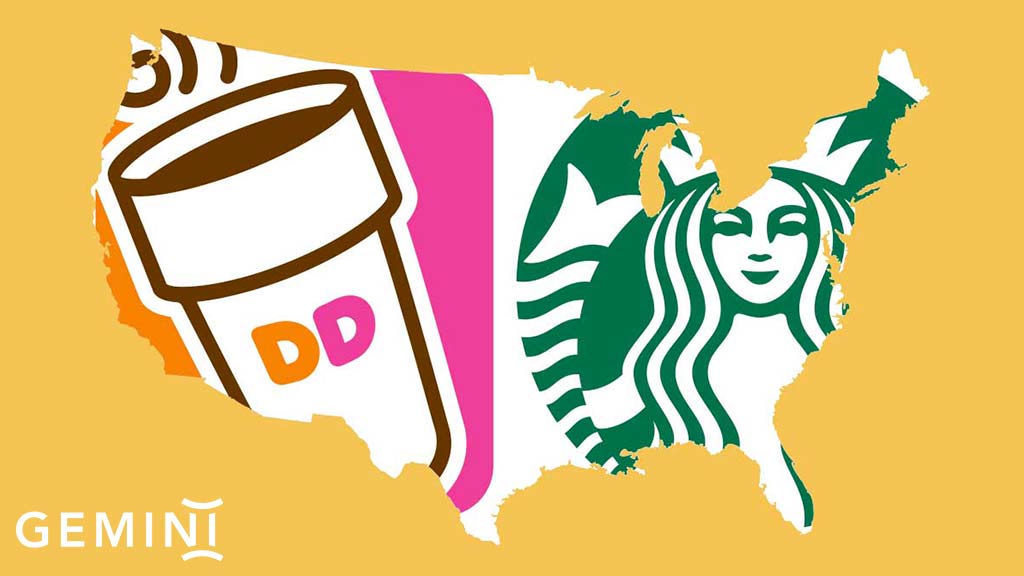While branding a product entails promoting a word, symbol, or product name, public relations (PR) professionals see their work as also selling something through marketing and advertising activities. Indeed, the worldwide recognized businesses owe a portion of their success to a vigorous PR strategy. According to some, appropriate branding combined with a competent public relations plan may result in increased sales and consumer loyalty for a product or service.
Some people think PR is an afterthought, unimportant, or largely irrelevant to the grand scheme of marketing. Those people are wrong.
They are demonstrably and irrefutably incorrect in both the substance and context of their beliefs on the issue. While it is true that the value of public relations may be overdone – it is, after all, not the only significant indicator for communication success — the simple reality is that far too many marketers do not invest enough thought, energy, effort, or resources into their brand.

Want The Right PR Strategy For Your Brand?
PR strategy and branding
This is especially true for small and medium-sized enterprises, which frequently believe they lack the time, money, or need to develop and maintain a distinct brand in the marketplace. That, too, is an incorrect assumption. The truth is that a good public relations plan can be scaled to benefit any business’s budget, regardless of size.
And this is important because PR strategy can set any firm apart from the competitors, whether it is one of the few little antique stores on a lovely small town main street or a big home improvement warehouse store with sites across APAC.
01. Branding defines value
Repeat this to yourself like a mantra, and memorize it: brands are not logos, and logos are not brands. Logos are pictures that convey the meaning of a brand. That is where the motivations for purchasing reside. The connection, the emotion, and the apparent worth. That is the definition of a brand. It is what a consumer thinks and feels when they see a product, and it is why they chose that product over the one next to it on the shelf. They are paying for a sensation, an experience, or something personal to them.
02. PR communicates a clear message
What does a buyer think and feel when they see a brand? They may not know it, but those messages are influencing their thoughts and feelings. In fact, in their minds, such signals are more genuine than whatever the product really accomplishes.
03. Public relations elicits emotion connection
Emotional ties with clients should be created and nurtured in successful PR campaigns. Because when individuals have an emotional connection to the message, they respond significantly better and more consistently. Loyalty must be earned, and public relations is an efficient way to do it.
04. Branding sets expectations
When customers buy into a brand proposition, they frequently do so because they have expectations that the brand has fulfilled or surpassed. If a brand does this regularly enough, it will become synonymous with the offered value. In the consumer’s perception, it becomes synonymous with the desired outcome. How beneficial is it for a brand to become the thing that the consumer want to achieve, experience, or create? That is the worth of branding.
How to choose a brand name?
If a brand name is only likable, it cannot be considered good. It is regarded good if it effectively communicates a message to a target audience. A wonderful brand name will very certainly already be in use. It’s critical to examine whether the brand name chosen is available in the necessary trademark categories.
With each passing day, the number of words accessible for brand names decreases, prompting designers to come up with increasingly unconventional ideas. This is potentially dangerous territory. There are few arguments in favor of rebranding an existing company with a bizarre new name, because brand equity created over many years might be destroyed in an instant.
In these circumstances, it’s better to keep the original brand name and give it a new personality. The purpose of a brand’s name is to clearly and consistently represent the brand’s essential ideas and messaging, so that customers get the same impression of what the brand is all about every time they interact with it. Long-term relationship management brand naming. The procedures outlined here will assist you in creating brand names that will work for a business in Thailand.
1. Set objectives: A name is an extension of a brand. As a result, it’s critical to determine what the company wants the brand name to accomplish. It is necessary to consider the journey that the brand name must take in a creative manner.
2. Define the target audience: If a company does not know who it is creating a brand for, it will never find a memorable name. It is critical to identify the characteristics of an ideal customer for a brand’s products and services as precisely as possible. It is critical not to finalize a brand name until it has been determined that it will appeal to the target audience and reflect brand values.
3. Create a brand archetype: The goal of developing a brand archetype is to clearly understand what a brand will mean or represent, which is required before deciding on the best brand name to appeal to potential customers.
Choosing the right PR strategy
Branding is a very important marketing tool, but without a well-planned, data-driven, and targeted PR strategy, all of the effort and money invested is likely to be squandered. The truth is that every public relations plan is only as good as the information that goes into it. So, regardless of which of the following PR strategy a marketer or brand manager chooses, they must remember that acquiring reliable market data is task number one.
Aside from that critical caution, here are 4 unique PR strategies that may be deployed in combination or as single market-facing initiatives.
PR strategy for a new brand
Introducing a new brand to the market can be the most time-consuming, labor-intensive, and creative PR strategy, but there are times and places when it is the best step a company can take. A fresh public relations strategy is not about putting a new gloss on an old product. It is about introducing and advertising something completely fresh to the market.
This is a time-consuming process since, even if the firm can rely on an established brand or reputation, they still have a lot of work ahead of them in terms of providing customers a reason to pay attention to the new brand, then make a purchasing choice, and tell their friends about it.
As a result, thinking brand loyalty would win the day is a bad bet. Instead, act as though the new product is a whole new notion.
Give the market distinct reasons to care about it and take a chance on it that are unrelated to their devotion to other items in the company’s portfolio.
PR strategy for product line extension
A product line extension is the process of modifying an existing brand in order to produce a distinct new offer that reflects and enhances the present brand message or positioning. It’s usually inside an established product line or, at the very least, within a product category already connected with the brand.
Because the current brand that acts as the foundation for the new product line already has a loyal consumer or fan following, this method is often simpler than a fresh product launch. Because they already enjoy and trust the present items, these fans are more inclined to purchase new, comparable products.
This PR strategy begins with meticulous research, determining what existing fans want and delivering on it while also gaining outliers or infrequent consumers.
PR strategy for multi-brand
Some consider the multi-brand approach to be an offshoot or subgroup of the product line extension, and they are not entirely incorrect. The major distinction here is that a multi-brand strategy promotes more than one brand in the same market. This PR strategy frequently includes putting two brands owned by the same corporation against one other.
When each product is aimed at a certain cohort within the total market, this competition-style technique works well. A business may promote two types of comparable or complimentary items with dramatically different labeling and promotion. While they are factually comparable items, their market positioning and accompanying campaigns distinguish them as competitive products, each with different value propositions for the buyer.
This PR strategy frequently enables corporations to expand the number of product facings they have on a particular shop Plan-o-Gram, restricting the quantity of shelf space accessible to the competitors. If a rival loses or is unable to gain market share, investing in a multi-brand strategy provides extra benefits in addition to greater revenue.
PR strategy for brand extension
This public relations approach is all about improving market awareness of an existing brand. This might include advertising and public relations initiatives that convey purpose or vision statements, or it could entail adding new goods or services to a current brand identity.
Again, recognizing the market and correctly forecasting the consumer’s hunger for new or extra items under a recognizable brand is critical. Just because a consumer wants something, it doesn’t imply they want it from a firm that, in their minds, does something else or serves a different purpose. They need a reason to trust that a company that does one thing can also do another.
Dunkin Donuts is an example of this. Initially known just for pastries and simple coffee, the company has expanded its morning offerings. When those goods were developed, the business transitioned into the speciality coffee industry, competing with huge brands such as Starbucks.

4 key elements of PR strategy
Branding entails far more than just presentation. Despite this, far too many people hear “brand” and immediately think “logo.” That is not the case. The Nike brand is not the Swoosh, nor is the McDonald’s brand the Golden arches. What such visuals convey to customers is the brand. How do they react when they view them, and what benefits would any items related with those pictures provide? Answering these questions lays the groundwork for every effective public relations campaign.
How should the PR strategy be established after the framework is in place? There are various options, and recognizing these choices can assist choose which PR strategy is ideal for the campaign at hand.
– What is the best way to position the brand?
– What Should the Brand’s Name Be?
– Who Should the Brand Stand For?
– How Will the Brand Be Built?
Brands are seldom confined to a single product or even a single product category. There will be growth, but what will that growth look like? Smart brand managers and marketers recognize that it is never too early to start thinking about a brand development plan.
This PR plan should ideally incorporate some or all of the four components listed below: new goods, multi-brands, line expansion, and brand extension.
New products are wholly new saleable items or services offered under the same brand as the previous product line.
Public relations and branding
Another part of branding and PR strategy is developing a customer’s interest in product advertising. This purpose motivates both the act of promoting a “brand” and the use of public relations “press releases.” Both of these ways’ art are tied to the wider commercial idea of doing everything necessary to sell something.
At the same time, experts involved in both PR and branding employ a variety of techniques to pique the attention of the media in a product or service in order to instill good expectations in the minds of the public. As a result, a lifelong public relations specialist comments online that this strategy and talent of generating and retaining brand loyalty with PR strategy is “a perfect marketing storm.”
The expert went on to describe how diligent public relations management aims to support a brand’s identity in the hearts and minds of customers.
Because brand awareness is all about a consumer’s interest in identifying a product as a result of strong PR, many organizations employ both public relations and branding specialists who collaborate to promote a client’s business or other offering. According to experts, a strong product PR campaign is all about top-of-mind awareness, or brand awareness. For example, when customers are asked to identify a product, the effectiveness of a strong public relations effort is primarily determined by a brand’s familiarity.
Top recent PR campaign
It’s reasonable to say that 2022 has been a hectic year, and it’s only half through. With threats and mayhem on everyone’s doorstep, businesses have had to get quite inventive with their public relations operations in recent months. While most people were cooped up at home, companies and corporations couldn’t rely on billboards and advertising to sell themselves, so they had to go outside the box.

Netflix opted not to forego advertisements in order to keep people safe at home, but instead to embrace the emptiness of the streets in a very innovative way. Copywriter Matithorn Prachuabmoh Chaimoungkalo (also known as Brave) and art director Seine Kongruangkit devised a public relations campaign concept to encourage people to remain at home.
Instead of marketing fresh new series and movies that people could watch online, they opted to highlight what was going on in such shows by giving away the most fascinating moments on billboards and posters. If someone came across one of these, it signified they were outside, and they would see a spoiler for that program.
Ask our PR experts to develop a unique PR strategy for your brand
Better PR Is Ready For You. Are You?
Publish Your Stories on 250+ News & Social Channels
Download Excel File (.xls)
310 client reviews (4.8/5)
You might be also interested in this ...
January 23, 2023
How Does Press Release Help Improve Your Google Ranking?
July 19, 2022
Top 20 Newspapers in Thailand
July 19, 2022


